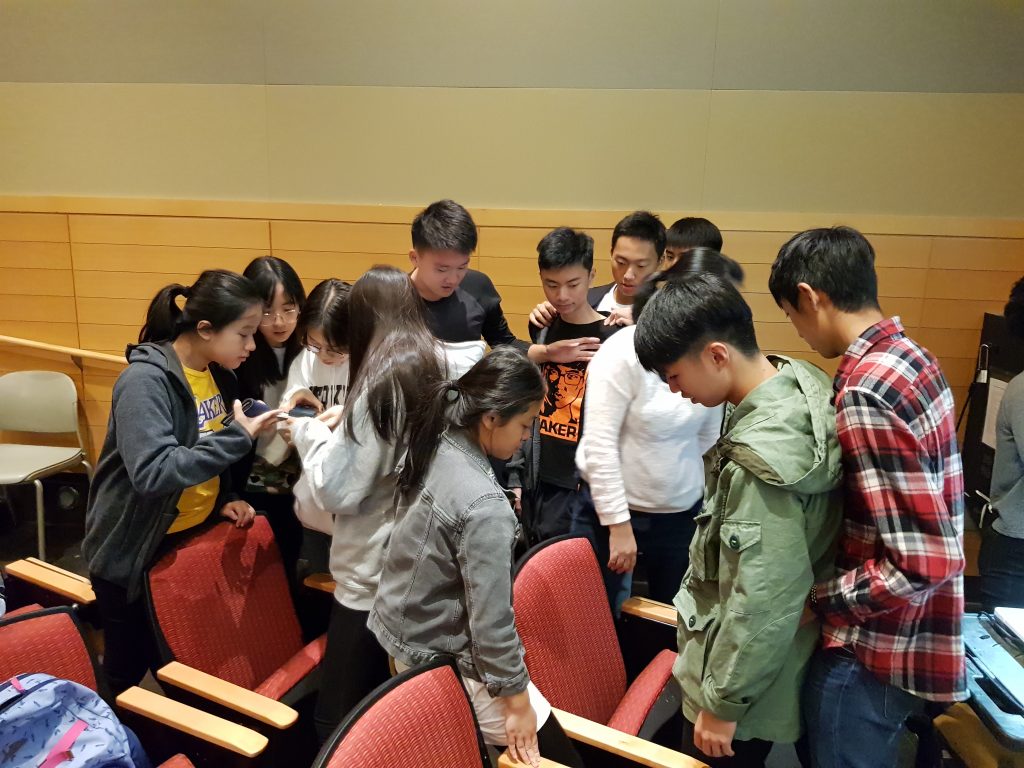The third day of our USA Summer Camp would also feature our last Bioengineering workshop. For this day, we decided to take things easy, and it would mainly feature the graduate student group giving us a series of lectures, as well as a seminar from one of the bioengineering professors, Terry Johnson.
Of all the lectures delivered that day, I think the one that the students enjoyed most was one from a graduate student named Daniel. He works with Professor Daniel Fletcher, and the project he was working on was a smartphone attachment that could turn your smartphone camera into a laboratory grade microscope. The students enjoyed the talk because (a) all of them already had a smartphone, and so this was something they were familiar with, (b) they hoped that one day they could buy this device and do some really nifty stuff with their phones. Dan was also kind enough to bring a few prototypes along, so after his demonstration, several of the students could also have a go with the lens attachment on their own smartphones.

All in, this workshop showed them that bioengineering has many uses in our everyday lives, and is not something confined to research laboratories and highly academic research. The students concluded their time at Berkeley with some basic knowledge of what bioengineering is all about, what are some of the research projects that graduate students engage in, how a bioengineering lab looks like and what are some of the applications in real life.
After lunch, we brought the students to visit two of the most iconic attractions at the university which are also frequented by members of the public. The first is the Berkeley Art Museum & Pacific Film Archive, which is the visual arts center of the University of California, Berkeley. There, the students had the opportunity to browse through the various art exhibitions, and of course, some of them made a pit stop at the store to pick up souvenirs.
Our last stop of the day was to the UC Botanical Gardens. The Botanical Gardens is a 34-acre piece of land home to over 10,000 types of plants including many rare and endangered species. The Garden is organized geographically, and features 9 regions of plantings from Italy to South Africa, and a huge collection of plants native to California. Plants from all the continents on Earth can be found here.
We had arranged for guides for our students, and we were lucky to have a number of them available that day, do we could break the students up into smaller groups. As this was a science-based visit, the guides were to show the students how math is present all around us, even in the plants that we often take for granted. For example, the centers of many flowers grow in precise geometric patterns, and similarly for leaves of certain plants as well. The gardens even had a greenhouse, and it was a strange and familiar feeling to travel all the way to California to see some of the plants that we are so used to seeing here in Singapore, such as bananas.
I think everyone appreciated the chance to get some sunshine and to stretch their legs, but after a couple of hours, it was time for them to get back to the hotel and get packing, because tomorrow would be their last day in Berkeley before they embarked on the other parts of their visit to the great state of California.
